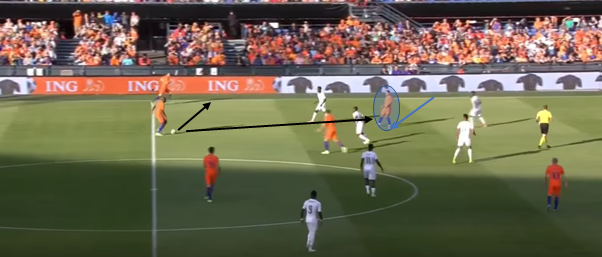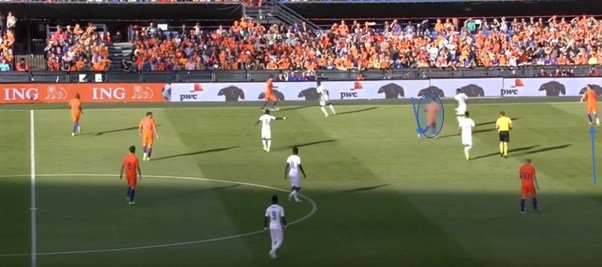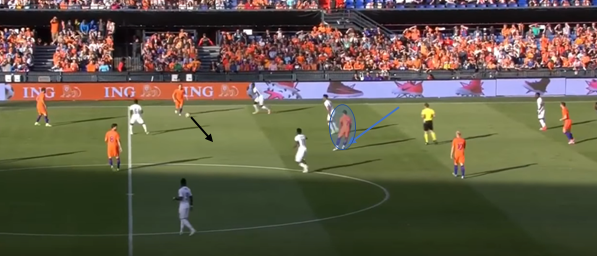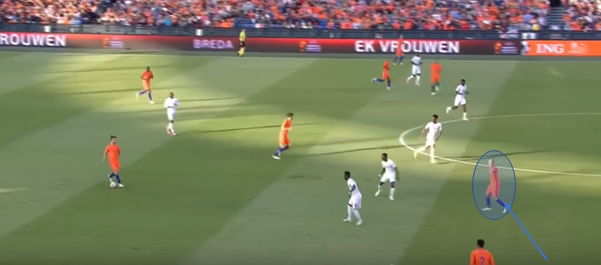By Alex Trukan
Modern central midfielders are becoming more and more fluid and flexible with their movements. They often vacate spaces in the middle of the pitch and make runs into wide areas or forwards. This has big implications for other positions around them. Wingers have to become much more flexible and willing to take up central positions to fill in the gaps and combine with central midfielders. Playing in those areas places different technical demands, players have to be more comfortable in tighter spaces and able to make quick decisions under pressure. Wingers also have to learn how to play with players all around them and not only from one side as in wide positions. This article will look at some of the ways wingers might be utilised centrally.
As centre back drifts with the ball and looks to play into wide areas, winger might choose to come towards the ball diagonally and look to receive just in behind the opposition’s midfield block. This will force opposition wide midfielder to narrow up spaces leaving more room for overlapping full back or if he doesn’t do that, a direct pass through the block will be available.

As full back gets on the ball, winger might be looking to offer an immediate angle of support for short combination play. This will free up at least one central midfielder to make forward run and support the striker centrally. Striker in turn will be available to move into wide areas and offer a pass down the line.

Winger moving away from central area and going down the wing or higher up the pitch will in turn give more opportunities for full back to drive with the ball centrally and get number 8/10/9 on the ball. It is also an effective way to switch play and use other flank, especially if the opposition plays narrow block.

Clever movement by wingers will allow the team to break the lines effectively without using central midfielders too early – allowing number 10 and 8 to play higher up the pitch.

As it can be seen above, communication (both verbal and non-verbal) is crucial when it comes to rotations of positions. Winger coming inside gives non-verbal signal (pointing) to centre back that full back is available to pass into.
By Alex Trukan, Development Coach, Nottingham Forest - @AlexTrukan


